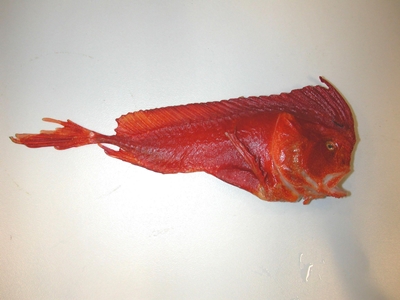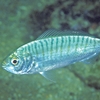General Description
Head and body extremely compressed, wedge-shaped, dorsal fin joined to very narrow tail base; body not covered in thick warty skin. Extremely variable in colour, often grey to olive brown with black spots, or a deep red. To 22 cm.
Biology
These fishes are able to shed their skin to prevent the build-up of fouling organisms.
Habitat
Sheltered reefs near sponges or macroalgae, in depths of 1-45 m.
Reefs
Sponge gardens
Distribution guide
Southern Australia.
Species Group
Depth
Shallow (1-30 m)
Deep ( > 30 m)
Water Column
Max Size
22 cm
Commercial Species
No
Global Dispersal
Native to Australia
Conservation Status
- DSE Advisory List : Not listed
- EPBC Act 1999 : Not listed
- IUCN Red List : Not listed





